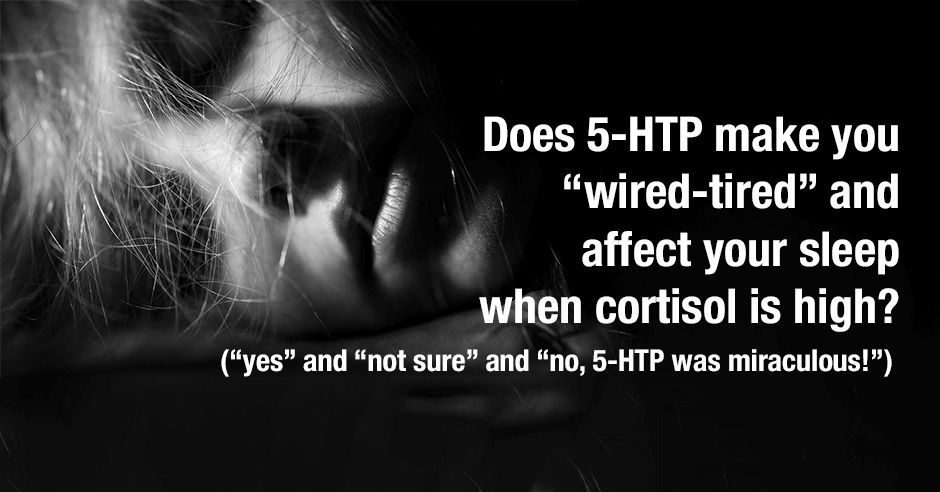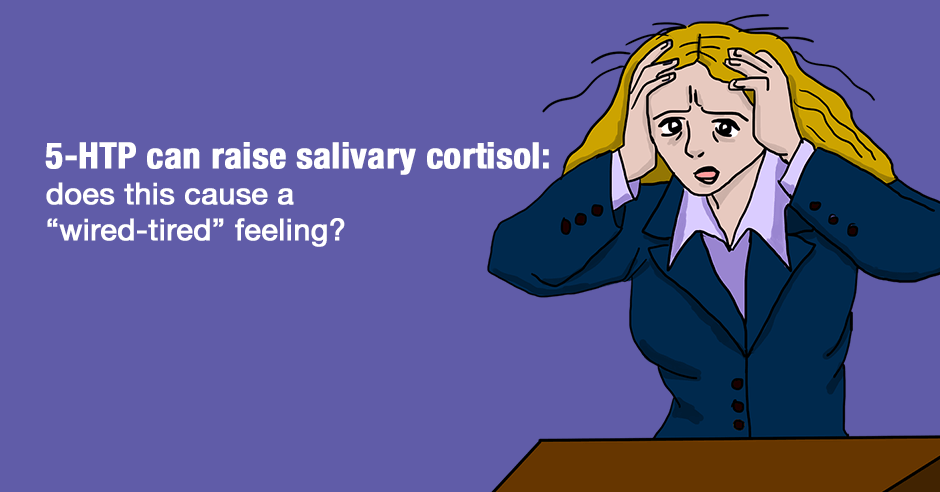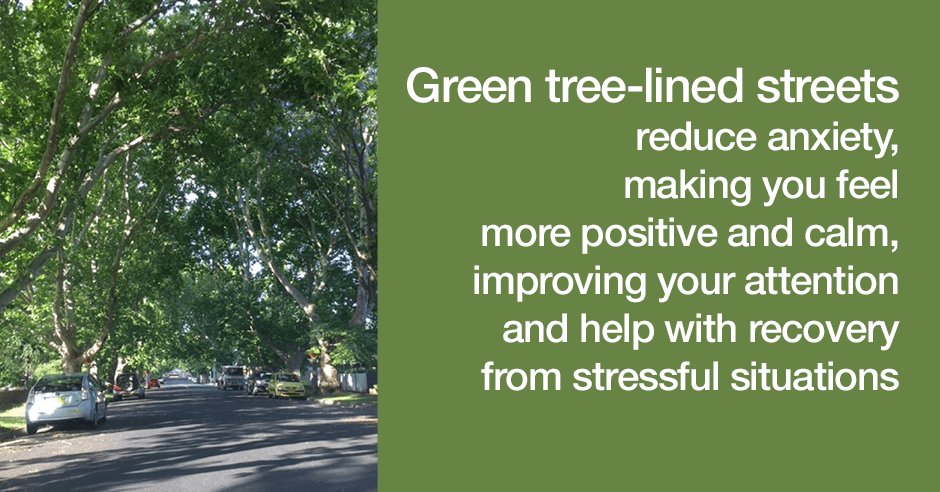
Both 5-HTP and tryptophan are amino acid supplements that are known to help to boost serotonin levels so you can feel happy, calm, sleep well and not crave carbs in the afternoon/evening. They also help with panic attacks and phobias, lack of confidence, depression, negativity, imposter syndrome, PMS, irritability, anger issues, pain/fibromyalgia, TMJ and anger. I typically have my clients with low serotonin symptoms start with a trial of tryptophan because I see such excellent results with this amino acid. That being said, some people simply do better on one versus the other and you may do better with 5-HTP.
There is one big caveat with 5-HTP. I don’t recommend 5-HTP when a client has elevated cortisol levels because we know that it can raise cortisol levels in certain individuals. This can leave you feeling agitated, cranky, as well as “wired and tired” at the same time. You may be able to relate to this if you’ve ever used 5-HTP to help with anxiety and insomnia and ended up feeling more anxious and more wide-awake despite your exhaustion and need for sleep.
Today you’ll hear actual feedback from members of my community who responded to a past blog post: 5-HTP can raise salivary cortisol: does this cause a “wired-tired” feeling?.
Read on to hear how one woman found that 5-HTP did lead to her feeling wired and tired and how 5-HTP made sleep worse and worse in another; how one woman wasn’t sure if 5-HTP caused her disturbed sleep and waking in the night; and how one man found that 5-HTP was miraculous for his wife. In each instance I offer input and next steps if necessary. As you can see their responses were very different and my hope is that you may see yourself in some of these “cases” and learn more about using the amino acids.
And be sure to read the original blog post if you’d like to check out the study and some of my feedback on it and using 5-HTP.
5-HTP did lead to feeling wired and tired and made sleep worse and worse
Gloria shared how 5-HTP did not help her sleep and made her feel wired and tired. She figured out the tryptophan did work for her:
I so appreciate your blog and have learned so much that is helpful. I tried 5-HTP and it did not help me sleep. I do much better on Lidtke tryptophan. The 5-HTP did make me feel wired and tired. I also have that reaction to GABA Calm because of the taurine and do much better on GABA-T SAP. Thank you for all your research.
I appreciate her sharing and am so pleased she has good results with tryptophan. The Lidtke brand is the one I have the most success with. The GABA-T SAP is a combination of GABA and theanine and is another product I recommend and see good results with.
Alexandra knew she had high night time cortisol and yet has been taking 5-HTP at the recommendation of her psychiatrist and her sleep was getting worse and worse. She shared this on the above blog post:
Your posts do not stop amazing me! I have been diagnosed with HPA axis dysfunction with high cortisol at night, my psychiatrist had me on 200 mg of 5-HTP and my sleep was getting worse and worse! I had to stop taking it because I was going to get the DUTCH test done by Geneva and noticed I slept much better without it…. I am so grateful for your posts!
I appreciate her for sharing and glad she made the connection. Hopefully she shared this information with her doctor too.
The 200mg 5-HTP dose is considered relatively high, certainly as a starting dose. I start clients on 50mg and increase based on symptoms so I assume she worked up to taking 200mg.
When 5-HTP is making things worse we switch to tryptophan, also starting low and increasing based on need. Keep in mind that 50mg 5-HTP is equivalent to 500mg tryptophan but I like to have clients start low when making a switch and increase based on results.
It’s always important to address the high cortisol levels (with Seriphos and other adrenal support). And to consider checking for parasites, changes in sex hormones, SIBO (small intestinal bacterial overgrowth), gluten issues and other food intolerances, toxin exposure, new EMF exposure, medication side-effects, mold toxicity and infections – all of which can affect sleep and may impact cortisol levels.
Not sure if 5-HTP caused disturbed sleep and waking in the night
Merrily experienced some really good results using 5-HTP, starting low and working up to her ideal dose of 200mg. And then she started experiencing disturbed sleep and wasn’t sure if it was the 5-HTP:
Because of mood issues – dysthymia [low mood], irritability, negative thoughts, and low energy, my doctor recommended 5-HTP. I started on 50mg 5-HTP and have worked up to 200mg daily (which I’ve been taking at bedtime for over 2 years now). On the occasions when I cut back, mood issues returned which does suggest to me it’s working.
Lately I am experiencing problems with disturbed sleep, waking during the night which I had not associated with the 5-HTP. Shall I switch to tryptophan?
Thank you so much for your blogs, your book and lectures. You really make a difference Trudy!
She has a few options. One is to cut back the 5-HTP again and see if her mood issues return. If they don’t return and sleep improves she can stay on the lower dose but may need to increase it temporarily during the winter time
Another option is to space out her dosing and take less at night and some mid-afternoon.
Finally she could switch to tryptophan. As I mentioned above, 50mg 5-HTP is equivalent to 500mg tryptophan but I like to have clients start low when making a switch and increase based on results.
If these approaches don’t work it would be useful to test salivary cortisol levels to see if her cortisol levels are now high and if yes, address this with Seriphos and other adrenal support as I mentioned for Alexandra above. And to consider checking the same root causes that can affect sleep and cause high cortisol levels.
No, 5-HTP was miraculous for his wife!
When serotonin levels are low and cortisol is not high, results with 5-HTP can be miraculous for some individuals. Russell shared how much his wife benefitted from just 50mg 5-HTP twice a day:
I treated my wife with 5-HTP when she suffered from work burn out, depression and menopause. This all hit at once.
I spent hours researching what I could to relieve the night sweats, mood swings etc. and came upon 5-HTP. I used 50 mg 5-HTP, one before bedtime and the other on waking up and it basically fixed everything that was associated with the problems mentioned above.It was miraculous to say the least and my wife was also very happy.
I’m thrilled for his wife and thanked him for sharing the wonderful results she has experienced with 5-HTP.
If her results were not sustained, I’d suggest taking her doses mid-afternoon and before bed as this is when serotonin is lowest. Otherwise, I’d say continue as above.
Keep in mind that 50mg 5-HTP twice a day is a typical starting dose and we increase from there. In her case, this was sufficient and she did not need to increase her dose or take additional doses during the day.
Positive research and positive case studies
My intention is not to scare you away from doing a trial of 5-HTP if you have low serotonin symptoms, but rather to educate. As with all nutritional approaches, there is no one-size-fits-all so we just need to be smart with using amino acids.
There are also many studies supporting the serotonin-boosting effects of 5-HTP:
- Sleep promoting effects of combined GABA and 5-HTP: new research
- Fibromyalgia: tryptophan or 5-HTP for anxiety, depression, pain and insomnia
- 5-HTP in Parkinson’s disease: benefits for depression, levodopa-induced motor complications, anxiety and sleep issues
- Pharmacotherapeutic management of sleep disorders in children with neurodevelopmental disorders
These blog posts illustrate other positive case studies where 5-HTP was extremely beneficial:
- 5-HTP benefits both adopted daughters who had prenatal exposure to alcohol: they are happier, more focused and can stay on task
- ADHD: 5-HTP melts have been a miracle for one of my adopted kids
I see wonderful results like this all the time, but always keep the high cortisol and “wired and tired” potential issues in the back of my mind.
Unfortunately many practitioners only ever recommend 5-HTP due to their concerns about tryptophan.
Resources if you are new to using 5-HTP (or tryptophan) as a supplement
If you are new to using the the amino acid 5-HTP (or tryptophan) as a supplements, here is the Amino Acids Mood Questionnaire from The Antianxiety Food Solution (you can see the low serotonin and other low neurotransmitter symptoms) and a brief overview here: Anxiety and targeted individual amino acid supplements: a summary.
If you suspect low levels of serotonin and do not yet have my book, The Antianxiety Food Solution – How the Foods You Eat Can Help You Calm Your Anxious Mind, Improve Your Mood, and End Cravings, I highly recommend getting it and reading it before jumping in and using amino acids so you are knowledgeable. And be sure to share it with the team you or your loved one is working with.
The book doesn’t include product names (per the publisher’s request) so this blog, The Antianxiety Food Solution Amino Acid and Pyroluria Supplements, lists the 5-HTP and tryptophan products that I use with my individual clients and those in my group programs.
Have you used 5-HTP with success? Or have you used it and felt “wired-tired” with an impact on your sleep? Have you correlated the success or failure of your 5-HTP use with your salivary cortisol levels?
What approaches have you used to lower your cortisol levels?
If you switched from 5-HTP to tryptophan did you have success with that?
If you’re a practitioner is this something you see with your clients/patients and take into consideration?
Feel free to ask your questions here too.







